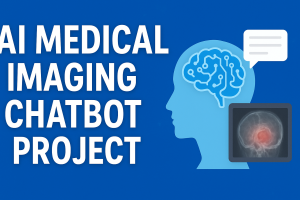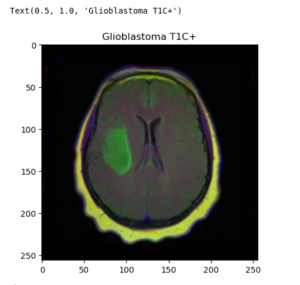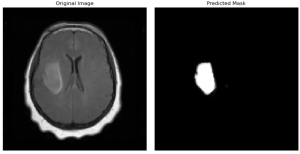Medical imaging plays a crucial role in modern healthcare, enabling early detection and diagnosis of life-threatening diseases such as brain tumors and blood cancers. However, analyzing these images requires expertise, time, and precision.
The AI-Powered Medical Imaging Chatbot is an innovative project that combines deep learning models for image analysis with a conversational AI chatbot to provide quick, accurate, and contextually relevant medical insights. This solution is designed to assist medical professionals, reduce diagnostic delays, and enhance patient care.
This project is an excellent example of how AI, computer vision, and natural language processing (NLP) can work together in healthcare.
Project Overview
The chatbot integrates image classification, tumor segmentation, and intelligent Q&A into a single system.
Image Classification
Uses a fine-tuned ResNet model to detect conditions such as Glioblastoma, Leukemia, or No Tumor.
Tumor Segmentation
Employs a U-Net model to highlight tumor regions in medical images for precise localization.
Intelligent Q&A with RAG
Uses Retrieval-Augmented Generation (RAG) to provide detailed, medically accurate explanations about the detected condition by querying a medical encyclopedia knowledge base.

Features & Functionality
Medical Image Classification
- Detects abnormalities in MRI scans and blood smear slides.
- Provides fast classification results to assist doctors.
Tumor Segmentation
- Accurately highlights tumor boundaries using pixel-level semantic segmentation.
- Helps doctors visualize affected regions clearly.
AI-Powered Medical Chatbot
- Generates human-readable medical explanations.
- Uses retrieval-based responses to prevent misinformation.
Interactive Workflow
- Upload image → Get classification → Segmented image + Explanation.
- Can be deployed as a web app using Streamlit or Flask.
System Architecture
Input: Upload medical image.
Parallel Processing:
- ResNet model → Classification.
- U-Net model → Tumor segmentation.
RAG Model:
- Classification result used as a query.
- Retrieves related medical information from a vectorized knowledge base (FAISS).
Output:
- Classification result.
- Segmented image highlighting tumor.
- Detailed condition report.
Tools & Technologies
Deep Learning Models
- ResNet-50 (fine-tuned) → Medical image classification.
- U-Net → Tumor segmentation with pixel-level accuracy.
Conversational AI
- LangChain → Orchestrates the RAG pipeline.
- Hugging Face Transformers → Provides pre-trained NLP models.
- FAISS → Efficient similarity search for medical text embeddings.
- Sentence-Transformers → Embedding generation for knowledge retrieval.
Development Stack
- PyTorch / TensorFlow → Model training and deployment.
- NumPy, Pandas → Data handling.
- OpenCV, Pillow → Image preprocessing.
- Streamlit / Flask → User-friendly web interface.
Expected Outputs
- Classification Result: e.g., Glioblastoma detected.

- Segmentation Mask: Tumor boundaries highlighted on the original scan.

- Medical Report: AI-generated explanation with condition details, symptoms, and treatments.
Contact to get the Source Code
Skype Id: jcodebun
Email: jcodebun@gmail.com
WhatsApp: +91 8827363777
Why is this Project Important?
✅ Combines Computer Vision + NLP in one system.
✅ Provides AI-assisted diagnostics for healthcare professionals.
✅ Helps in early detection of tumors and cancers.
✅ Reduces time to diagnosis, improving patient outcomes.
✅ A perfect AI/ML final-year project for students interested in healthcare applications.
Conclusion
The AI-Powered Medical Imaging Chatbot is a breakthrough project that demonstrates how AI can revolutionize healthcare diagnostics. By integrating deep learning for image analysis with a conversational AI system, this project not only detects medical conditions but also educates users about them in real-time.
This innovative approach has potential applications in:
- Hospitals & Clinics → Assisting radiologists.
- Education → Training medical students.
- Research → Advancing AI in healthcare.
